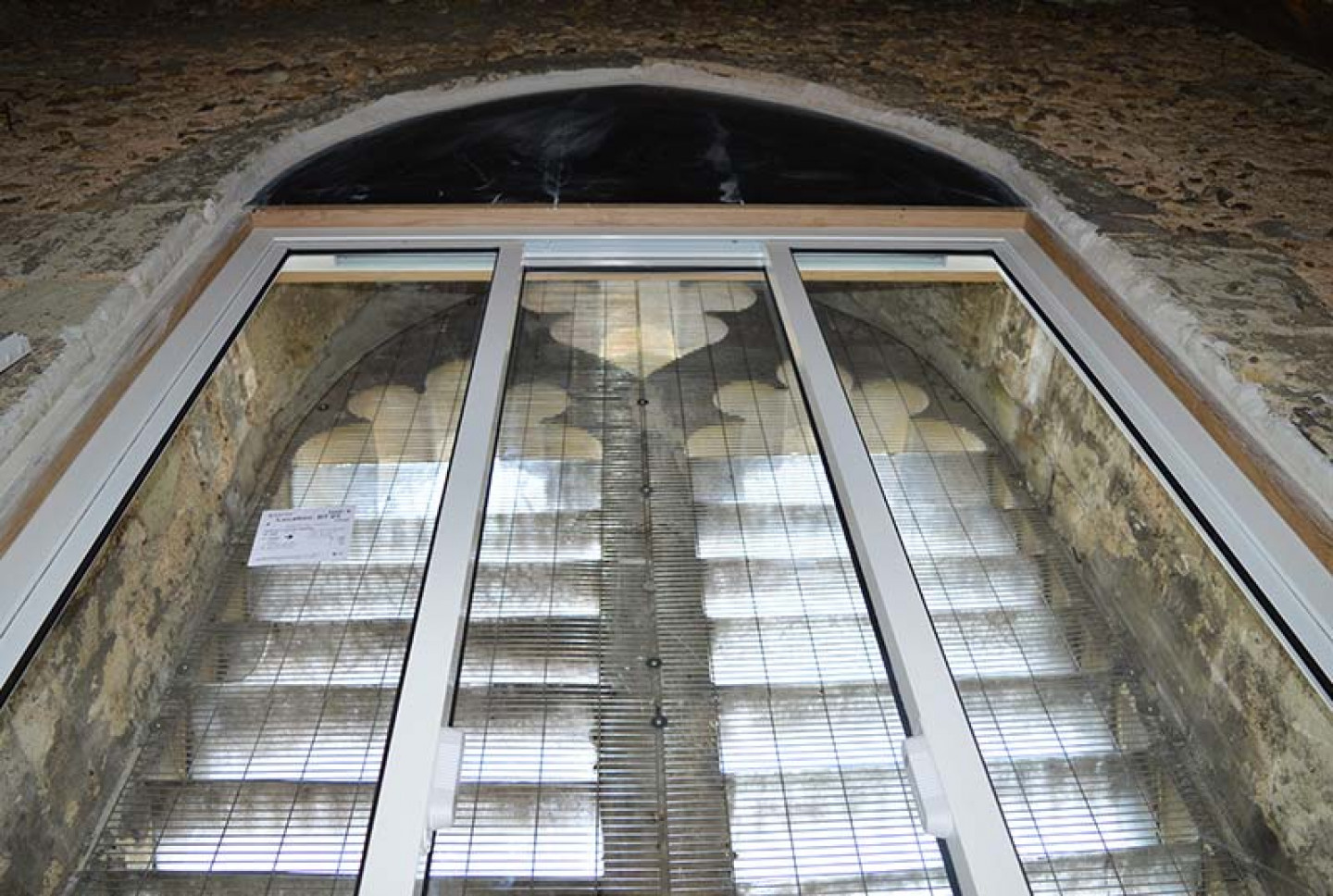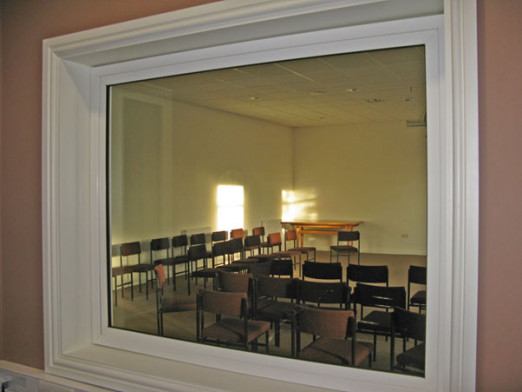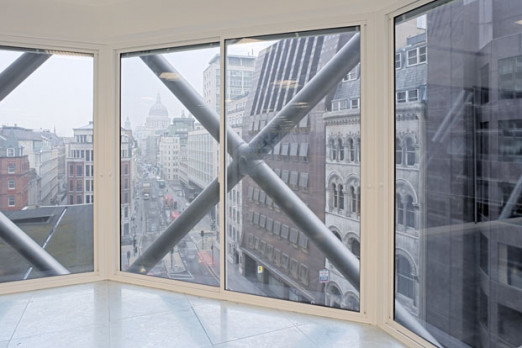The Grade I Listed St Andrew’s Church in Much Hadham, a village in Hertfordshire that dates back to Saxon times has recently refurbished its historic bells. Part of the refurbishment was to improve the dilapidated sound insulation and thermal retention to the louvres in the church tower. Recent inspections have highlighted the poor installation and condition of the fittings, most of which date from the 19th century. Fundraising carried out over a six month period by the Much Hadham Guild of Church Bell Ringers on behalf of the Much Hadham PCC, a registered charity, ensured that the bells and their surroundings in the tower could be modernised, to be enjoyed by generations to come.
The church of St Andrew’s is said to have been built in the early part of the 14th century, consisting of flint walls with battlements and inside, heavy oak doors, massive roof timbers and intricate carvings on the furnishings. An impressive tower that was built in the 15th century includes a spire comprising of 6 bells with a taller than average spike, 121 feet in height. The heads of an elegant King and Queen were carved into the west doorway of the tower in 1953 by revered artist Henry Moore, who lived in the parish from 1947 until 1986. In 1979 Moore chose an etching of branches as the basis for a stunning design on the east window.
A significant reduction of the noise break-out of the bells at the boundary of the church yard was required. The 8 ringing bells in the tower were taken off-site to be refurbished and re-tuned. Prior to them being rehung in the existing frame with new headstocks, wheels and fitting, it was suggested that secondary glazing was fitted into the louvre openings in the tower. The existing louvres are 1450mm wide and 3850mm high. Freeland Rees Roberts Architects and Main Contractor Hutton Construction called upon Selectaglaze; the UK’s leading designer and manufacturer of secondary glazing systems for a solution.
Selectaglaze recommended a series of bespoke units designed for the client’s requirements. Subsequently, the existing dilapidated sound insulation was removed and replaced with secondary glazing.
Like many historic buildings, not all of the openings were plumb and true. Prior to the installation of the secondary glazing, timber frames were fitted to each opening to accept the secondary units ensuring they could support the weight of the new glazing of around 130-140kg. A 200mm cavity was used to enhance performance.
Selectaglaze installed 8 units in the 4 openings of the church’s bell tower; a combination of the Series 42 fixed light units mullion coupled with the Series 80 3-pane horizontal slider with 10.8mm thick laminated glass.
Transporting the units up the bell tower posed an interesting challenge. The fully assembled units could not be carried up the extremely narrow spiral stairs leading to the top of the tower. Therefore, an alternative solution was found, whereby the units were lifted 12 meters up with great care in sections via rope and pulley from the bottom of the tower up through a series of trapdoors across 3 floors. Once they arrived safely at the top of the tower, components were fixed together and then installed into the louvre openings, matching existing sightlines.
It was initially suggested that a layer of primary glazing was to be installed in between the irreplaceable glass louvres which are fixed in an open position as well as the introduction of secondary glazing. In the end this was not required due to the effectiveness of the secondary glazed units, which achieved a 30-33dB noise reduction.
The restoration of the bell tower has been a huge success and all work, including the secondary glazing installation and refurbishment of the bells has been completed just in time for the bells to be rung for the centenary of the Armistice in November 2018. The noise of the bells no longer disturbs the residents who live nearby the church. Thermally speaking, the U-values have also been improved and draughts in the bell tower have been practically eliminated.
“We had a problem. The existing felt sound insulation fitted to the inside of the belfry louvers had become very dilapidated and needed to be replaced. It also made the belfry quite dark needing lights to be on when working on the bells. The solution was to install Selectaglaze sliding secondary glazing units inside the existing glass louvres. The units can be opened for service ringing and closed for bellringers practice nights. The secondary glazing allows natural light to flood into the belfry and permit a tremendous view across the village as well.” Nick Hughes, Hutton Construction.
Founded in 1966, Royal Warrant Holder Selectaglaze has worked on all types of buildings, from museums to new build hotels working closely with clients to meet their requirements on projects. Selectaglaze has undertaken a number of projects involving church refurbishment or change of use, including the Grade II Listed St Luke’s Chapel on the Oxford University Estate. Purpose designed secondary glazing can be unobtrusive, sympathetic to the building and, in addition to noise insulation, markedly improves the window’s thermal efficiency and increases levels of security.
Sign up to receive our monthly newsletter and receive updates about our latest news and events.


